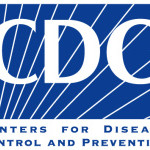- Industry: Government
- Number of terms: 6326
- Number of blossaries: 0
- Company Profile:
A phenomenon in which some persons (especially older adults) who are skin tested many years after infection with M. tuberculosis have a negative reaction to an initial skin test, followed by a positive reaction to a subsequent skin test. The second (i.e., positive) reaction is caused by a boosted immune response. Two-step testing is used to distinguish new infections from boosted reactions (see Two-step testing).
Industry:Health care
A procedure for examining the respiratory tract that requires inserting an instrument (a bronchoscope) through the mouth or nose and into the trachea. The procedure can be used to obtain diagnostic specimens.
Industry:Health care
An injectable, second-line anti-TB drug used primarily for the treatment of drug-resistant TB.
Industry:Health care
A hole in the lung resulting from the destruction of pulmonary tissue by TB or other pulmonary infections or conditions. TB patients who have cavities in their lungs are referred to as having cavitary disease, and they are often more infectious than TB patients without cavitary disease.
Industry:Health care
Treatment of an infection or disease by means of oral or injectable drugs.
Industry:Health care
Two or more PPD skin-test conversions occurring within a 3-month period among HCWs in a specific area or occupational group, and epidemiologic evidence suggests occupational (nosocomial) transmission.
Industry:Health care
A person who has shared the same air with a person who has infectious TB for a sufficient amount of time to allow possible transmission of M. tuberculosis.
Industry:Health care
The process of growing bacteria in the laboratory so that organisms can be identified.
Industry:Health care
A second-line, oral anti-TB drug used primarily for treating drug-resistant TB.
Industry:Health care
